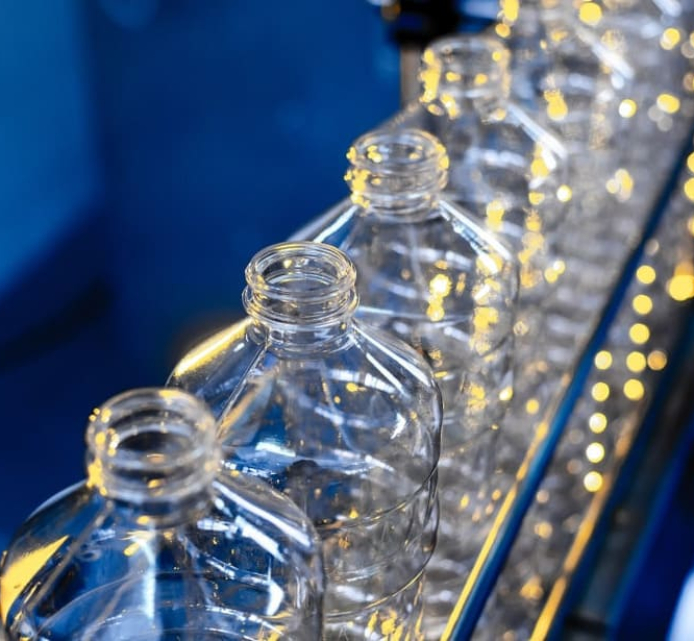
Everyone has long been accustomed to buying mineral water, drinks and dairy products in plastic containers. No one even thinks about where convenient packaging for liquids comes from. The technology of blowing pet bottles is very interesting. It all started with the desire of people to invent a lighter and more durable container than glass and aluminum.
For the first time, the synthesis of the polymer began in 1941, but it was not until 1966 that preforms could be poured from it. The task of scientists was to develop a material that could withstand the pressure of the gas. This is how the first PET bottle was born - strong, light, airtight, inexpensive to manufacture.
Contents
Have you noticed the necks of various drinks? All of them differ in diameter due to the properties of the liquid that is poured into the container:
- ✅ mineral water, soda and beer are distinguished by special grooves on the neck of the bottle, which prevent the drink from pouring out under the influence of gas when cover rotation;
- ✅ preforms for plastic bottles for milk and juice have a wide mouth for free access of oxygen;
- ✅ still water and drinks do not require additional grooves on the plastic;< /li>
- ✅ thick vegetable oils are poured into a container with a large diameter neck for ease of use.
Bottle shapes vary by manufacturer. But the necks are formed at the preform stage, and depend solely on the type of product being produced.
How preforms are made
Blanks for future containers are made by injection molding from plastic granulate. To do this, PET raw materials are thoroughly dried. Hygroscopic material easily absorbs moisture, which negatively affects the quality of products. Undried PET granules turn into cloudy containers that are easily deformed.
The finished raw material is melted and a dye is added. Blowing PET bottles does not provide for coloring, so it is produced at the stage of blanks. Colored plastic – this is not a tribute to fashion, but UV protection and a kind of labeling of the drink. So, beer is poured into green and brown bottles, and yellow and red ones are used for lemonade.
Preform casting takes place in special machines. Molten colored plastic is fed under high pressure into cold molds. The weight and wall thickness of the blank determine the volume of future bottles. Enterprises purchase ready-made preforms, after which they produce containers on their own.
Shaping with ISBM technology
Production of PET products using internal blow molding (ISBM) takes place in two steps. First – preform casting, described above. The second involves softening and shaping with the help of equipment for blowing pet bottles. For this, single-phase and two-phase machines are used.
Some of them carry out the entire production cycle from plastic granules to finished containers. At the same time, the preforms still warm come to the inflating element, which saves energy for heating. Bulky finished bottles require large storage areas, up to 12 times the space for preforms. Therefore, many enterprises install single-phase equipment that blows containers and immediately delivers them to the conveyor for bottling drinks.
Bottle blowing steps
Equipment may differ in manual and automatic loading, the number of cells for blanks, and, accordingly, the number of finished containers per hour of work. However, regardless of the design, the PET bottle blow molding machine has a similar working principle:
- ✅ Control. Rejection of low-quality workpieces.
- ✅ Heating. The preforms are clamped with special pins under the neck ring and placed in the heating chamber. Heating elements give different temperatures to different parts of the workpiece to obtain the desired shape of the product.
- ✅ Balancing. Uniform temperature distribution throughout the preform.
- ✅ Extrude and blow. The heated billet enters the open mold. The walls and bottom are closed, a rod is lowered from above, which stretches the preform. At the same time, air enters the middle of the workpiece under pressure. The plastic fills the chilled mold, hardening.
- ✅ Rest. PET shrinks when it cools quickly, so the machine continues to maintain temperature to keep the shape of the product.
- ✅ Control. Damaged products are automatically rejected. The rest is fed to the bottling or packaging lines.
Hot blown PET bottles allow the production of various container shapes. Each plant uses its own unique molding elements and can completely change the nature of a product by changing molds and reprogramming the machine within an hour.
When barrier additives are used
Despite the excellent characteristics of polyethylene terephthalate as a packaging material for liquids, it has several disadvantages. PET transmits ultraviolet rays, which harm the quality of drinks. In addition, plastic walls start oxygen and release carbon dioxide, which is unacceptable for soda.
Barrier additives are used to improve material properties – nylon or absorbent. They are added to the molten granulate during the formation of preforms. With additives, the plastic becomes cloudy, but this is imperceptible on colored products. Another way to protect a drink is the multilayer production of PET blanks, in which each layer contains a protective component. Absolutely all barrier additives for plastic bottles are allowed in the food industry and do not harm human health.

